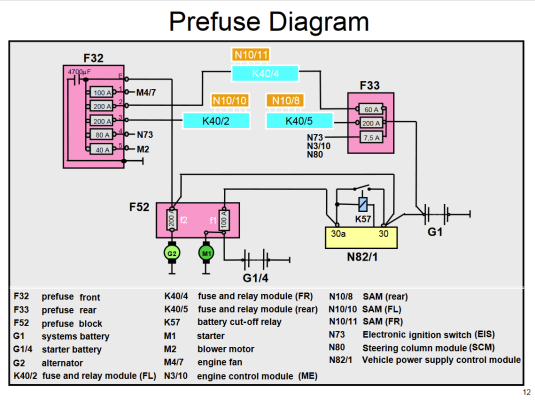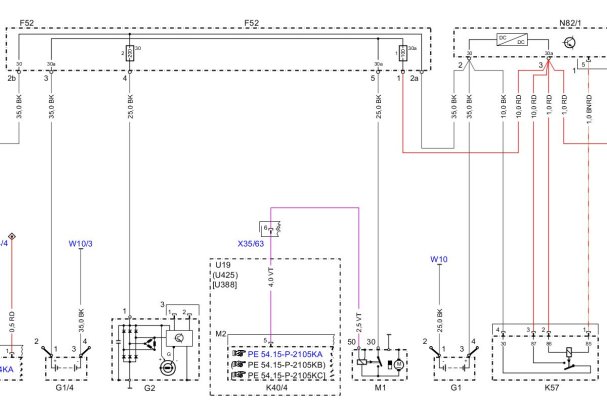That's a useful diagram, thank you.
So I wonder what conditions have to be met for relay K57 to close.
Is it just a conventional split charge relay, like you might see in a camper van for instance, such that it only needs to see some alternator output for it to close? In my camper van, the voltage on the alternator exciter wire (which is used to extinguish the battery light on the dash) is also used to close the split charge relay - it means the batteries are separated when the engine is off, but connected when it's running. I realise the system probably won't be that simple in your car, but maybe there's a signal wire that would do the same job in the BCM as the exciter wire (i.e. to confirm that the alternator is running), and maybe that wire has broken or is making a bad contact. If you can see the back of the alternator, you could check for such a wire.
Or are there some 'smarts' inside N82/1 that check for other conditions, in addition to sensing some output from the alternator? Maybe the consumer battery has to get up to a certain voltage before the relay closes. I'm only speculating about 'priority', but this could be where the 'priority' of the consumer battery over the starter battery might be applied, and I'd doubt you can change that. But if the BCM needs to see a certain voltage at the consumer battery, I can't help thinking 14.1V is a fraction low - mine is nearer 14.5V I think - and maybe it's not passing the required threshold. Again, just thinking out loud. But if this IS the issue, and assuming your consumer battery is in good shape and is fairly well charged, then the slightly low 14.1V could be due to the voltage regulator.
Just to confirm - are you saying that you never see a charging voltage on the starter battery, no matter how long you leave the engine running? Does your starter battery eventually go flat - is that what alerted you to the issue?
*EDIT: If the relay DOES require a certain voltage on the consumer battery, that makes the system more similar to a VSR (voltage sensing relay) that some people use in a camper van for a split charge system.
*EDIT2: The wiring diagram does in fact show that the consumer battery has priority - it is permanently connected to the alternator, and the starter is connected in by the relay, according to whatever conditions the BCM applies. This is the other way round compared to most camper vans for instance, where the starter is prioritised over camping consumers, on the basis that most people would prefer to be able to drive home!


